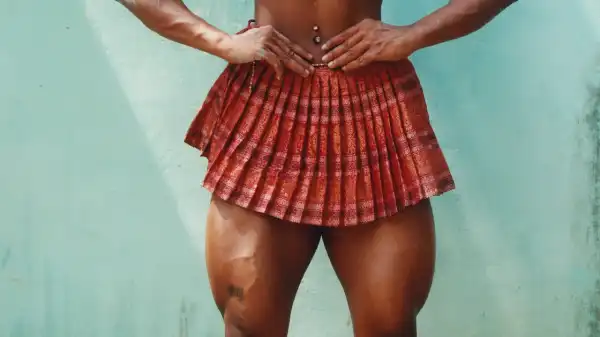
Save this storySave this storySave this storySave this story
The photo shoot is a symbol of a lost time. Taken in 1991 during the second annual Great American Workout, a fitness event held on the South Lawn of the White House, it shows President George H. W. Bush lifting a 135-pound barbell. He is flanked by two bodybuilders; only one, the lesser-known one, is helping the grimacing leader of the free world, who looks like a country-club veteran in a polo shirt and pastel windbreaker. The other bodybuilder, grinning and pointing at the camera, is a man we all know, an Austrian who has become an integral part of the American consciousness, known by one name: Arnold.
It was a funny pairing, one that would have been considered odd not so long ago. In 1976, when the Whitney Museum elevated Arnold Schwarzenegger to a pedestal as a “living work of art” in a daylong symposium, bodybuilding was still seen, as a Sports Illustrated reporter noted, as “a sport of little repute in this country.” Ian Fraser, covering the event in The New Yorker, noted a Columbia University art professor’s disdain for the “well-built bodybuilders” who displayed “some of the worst excesses” of a bygone era. But the 1980s, by embracing excess, eased America’s distrust of obvious muscle: gyms and Rocky movies proliferated along with a mounting national debt. Never as rich as its aesthetics suggested, the U.S. entered the 1990s financially—and therefore spiritually—dejected. “America felt like it was losing… losing its sense of identity,” writes John Ganz in When the Clock Broke, his book about that lost moment when a friendship began to form between the president and the bodybuilder-turned-governor. Meanwhile, as if to stave off a national downturn, countless bodies across the country struggled and strained, breaking themselves in the hopes of creating something better and stronger.
Men sweating in weight rooms, women beaming in aerobic studios – has the gym ever been as segregated as this ready-made image? Perhaps not, although members of the so-called fair sex were hardly encouraged to shapeshift into Schwarzenegger’s silhouette. The 1977 documentary Pumping Iron introduced viewers to the peculiar mores of male bodybuilding. Less memorable was the 1985 sequel, subtitled Women, which featured, among other things, an Australian powerlifter-turned-bodybuilder named Bev Francis, whose delicate muscles – perceived as unfeminine – were rated only eighth by the judges of a filmed competition. “I’m just saying that women are women and men are men. “There is a difference, and thank God for that difference,” a male judge says at one point, delivering the kind of raw tautology that plagues both sport and the law today.
This notion of “difference” came from—what else?—popular culture. The summer after the second Great American Workout, Linda Hamilton had created a new image with her portrayal of Sarah Connor in Terminator 2: Judgment Day, transforming, as Entertainment Weekly put it, “her soft, feminine frame… into a hard physique that even a five-figure Mr. Universe would admire.” This “hard physique,” the result of both free weights and plenty of cardio, nevertheless remained on the muscular side of the skinny that remained “fashionable” throughout the nineties. Women were said to be striving not for muscle but for “tone,” which was thought to be achieved through “fat-melting” reps with rubber weights that were kept to five to eight pounds, lest they become “bulky.” It was standard fodder for women’s magazines in the 2000s, when a body like Britney Spears’ could be accused of being too muscular. (“I wish Britney didn’t work out so much,” Hugh Grant said at the time. “It might make women look thinner.”) But the following decade saw a shift in gym culture, as women in the gyms took a break from their workouts and found themselves surrounded by female companionship.
The proposition that propelled women to lift weights was irresistible in its inversion of gendered wisdom: What if you could spend less time in the gym, stop restricting your food intake, and stop tying fat loss to a number on the scale? Emerging internet forums like Reddit’s r/fitness replaced the empty perfection of editorial pages with crowdsourced examples and how-tos. Regular women posted amateur snapshots of themselves showing off their lean-but-slim bodies, achieved through strength training, little to no cardio, and a calorie intake generous enough to make Marie Claire vomit. By Casey Johnston, chronic dieter and neophyte
Sourse: newyorker.com